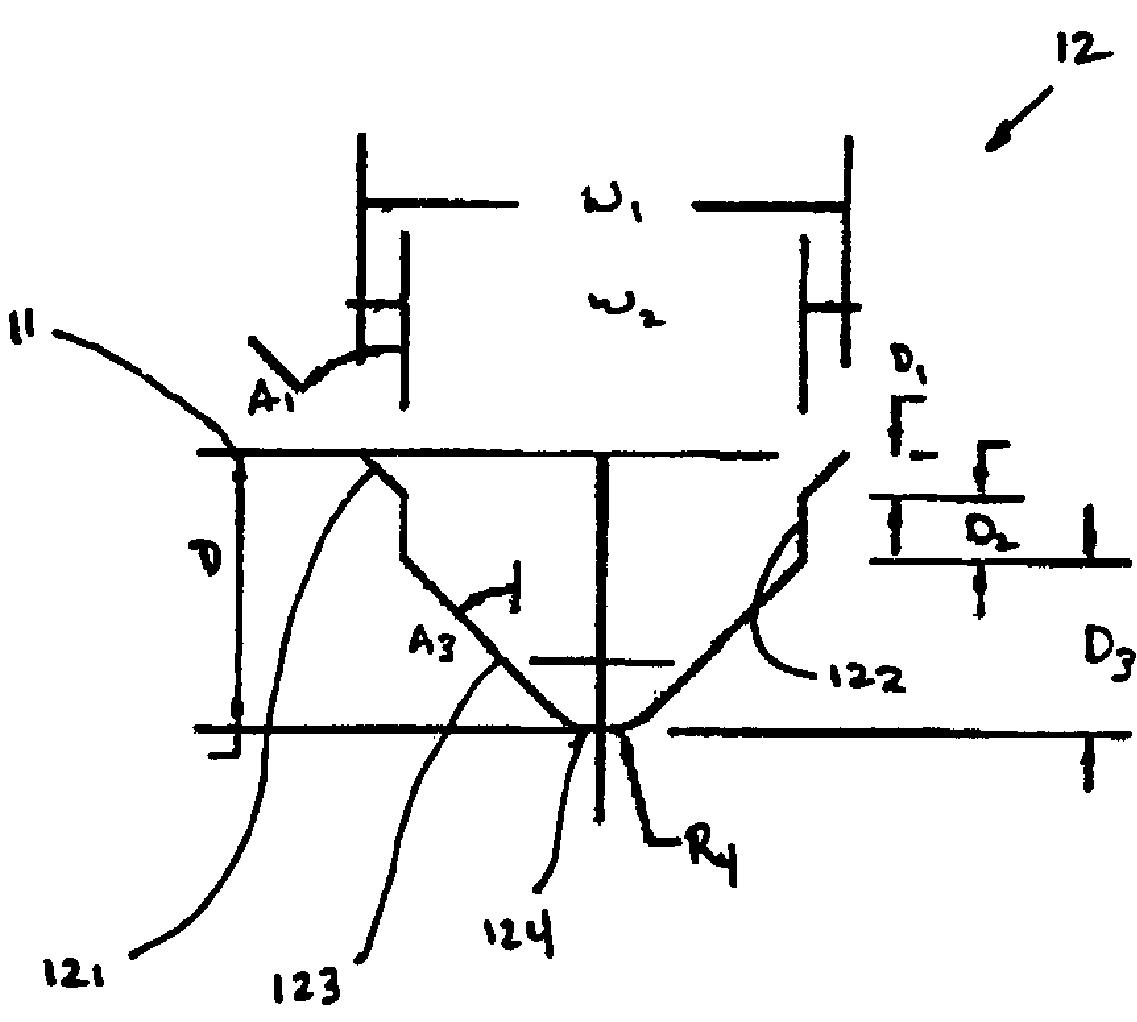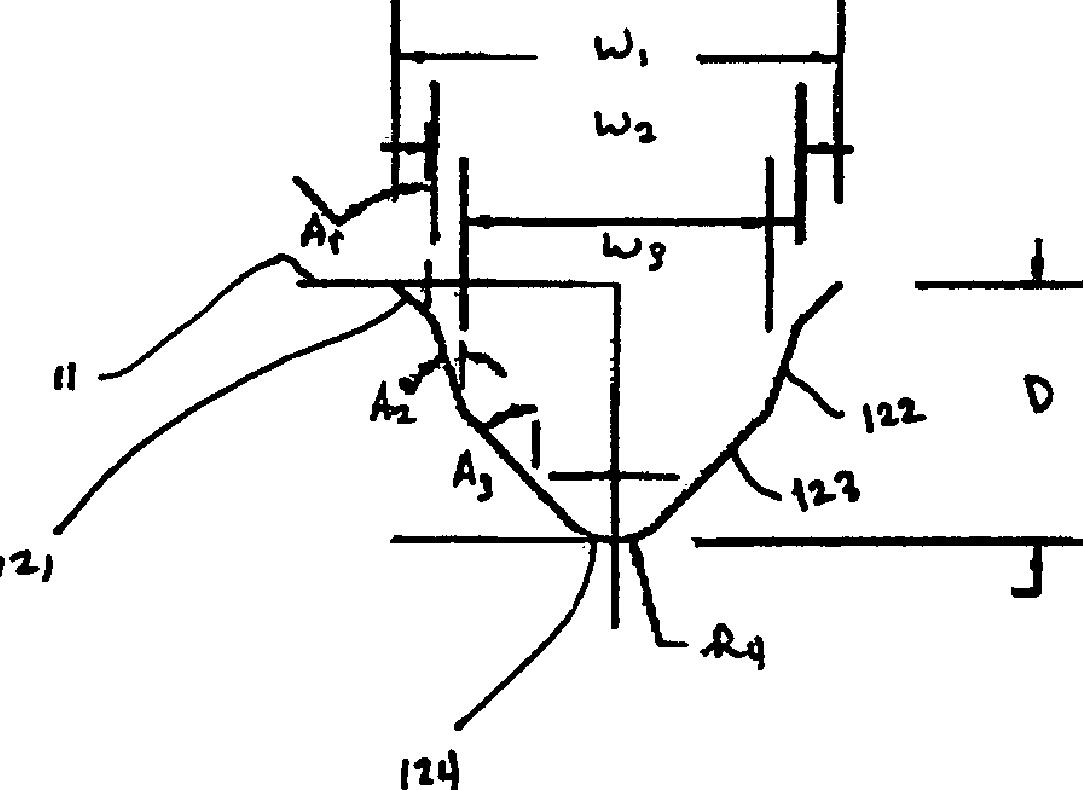Acushnet Weighs in on Groove Designs
Recently I have posted about some interesting groove patent applications by Karsten Manufacturing (aka PING) and Bridgestone. Well, don’t count Acushnet out, as they had an interesting groove patent issue this week. The patent is USPN 7568983 titled “Golf Club Head Groove Configuration.”
The present invention is directed to a golf club head with an improved striding surface. The grooves are machined into the strike surface with tight tolerances. The grooves have sharp edges, radiused ends, and a draft angle between about 2 degrees and 12 degrees. The striking face is machined such that it has a uniform texture with a roughness of more than 40 Ra. The grooves may contain a plurality of portions, including a radiused or angled portion, a portion having substantially parallel walls, a portion having a v-shape, and a curved portion.
Check out these groove profiles:


The patent goes on to explain:
Golf club heads come in many different forms and makes, such as wood- or metal-type, iron-type (including wedge-type club heads), utility- or specialty-type, and putter-type. Each of these styles has a prescribed function and make-up.
Iron-type and utility-type golf club heads generally include a front or striking face, a top line, and a sole. The front face interfaces with and strikes the golf ball. A plurality of grooves, sometimes referred to as “score lines,” is provided on the face to assist in imparting spin to the ball. The top line is generally configured to have a particular look to the golfer and to provide structural rigidity for the striking face. A portion of the face may have an area with a different type of surface treatment that extends fractionally beyond the score line extents. Some club heads have the surface treatment wrap onto the top line. The sole of the golf club is particularly important to the golf shot because it contacts and interacts with the ground during the swing.
In conventional sets of iron-type golf clubs, each club includes a shaft with a club head attached to one end and a grip attached to the other end. The club head includes a face for striking a golf ball. The angle between the face and a vertical plane is called the loft angle.
The United States Golf Association (USGA) publishes and maintains the Rules of Golf, which govern golf in the United States. Appendix II to the USGA Rules provides several limitations for golf clubs. For example, the width of a groove cannot exceed 0.035 inch, the depth of a groove cannot exceed 0.020 inch, and the surface roughness within the area where impact is intended must not exceed that of decorative sand-blasting or of fine milling. The Royal and Ancient Golf Club of St Andrews, which is the governing authority for the rules of golf outside the United States, provides similar limitations to golf club design.
U.S. Patent Application Publication No. 2004/0087387 is directed to grooves for iron-type golf clubs. However, the grooves are poorly engineered.
Are you curious as to whose patent application discloses grooves that Acushnet believes to be “poorly engineered?” The Acushnet patent is referring to the grooves disclosed in Taylor Made’s patent USPN 6814673. Think these companies are competitive? Funny stuff!
David Dawsey – Monitoring Golf Groove Technology
PS – check out the post “Is Your Wedge Lacking the Appropriate Traces?” regarding another Bridgestone invention designed to help with spin
PPS – also check out the post “Does Your Club Face Need Some Engineered Texturing? Taylor Made Thinks So!”
PPPS – check out other golf iron invention posts HERE
